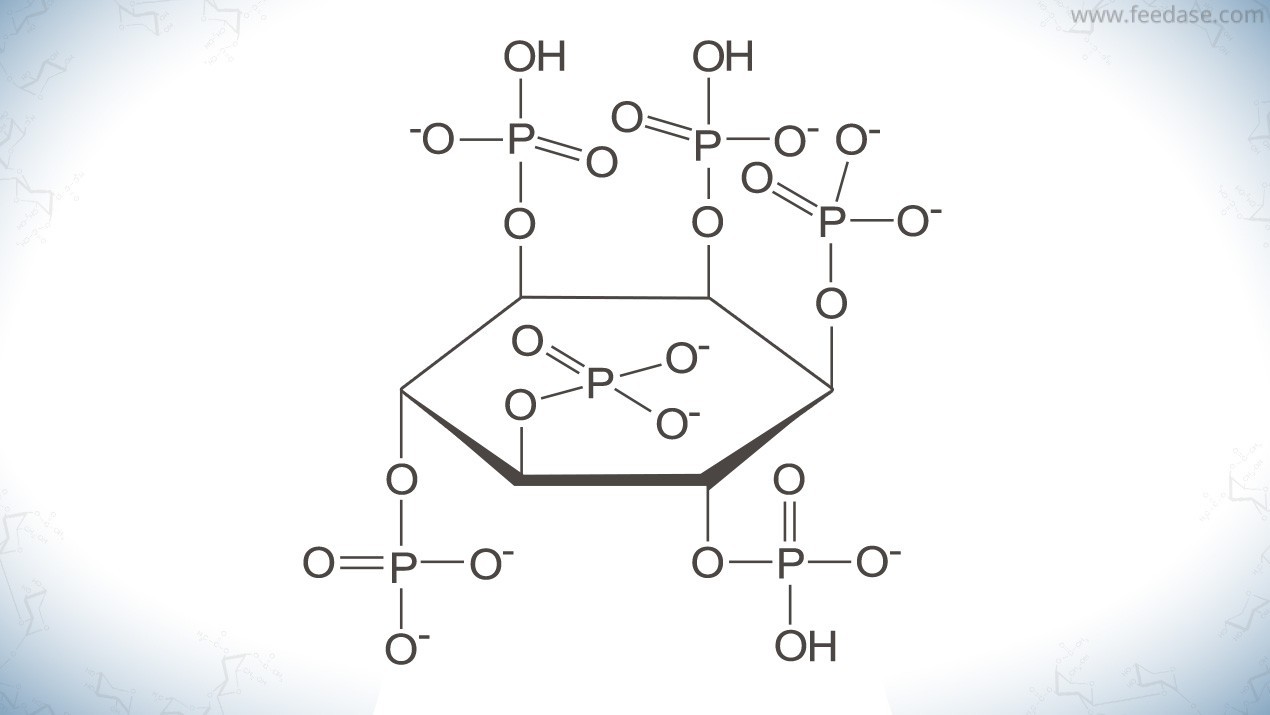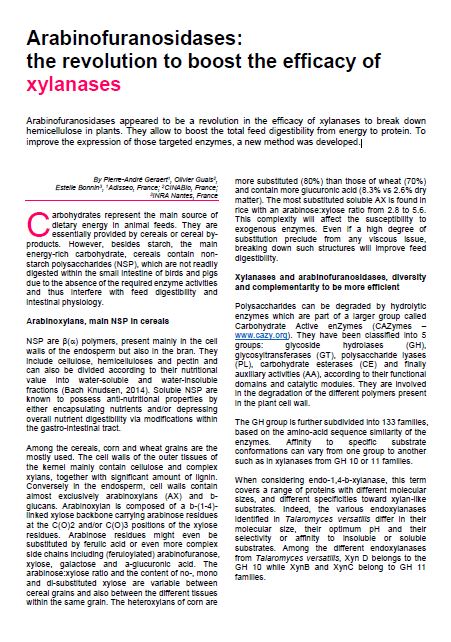The phytate molecule (Myo-inositol hexaphosphate) is the primary storage form of phosphorus in grains of cereals (Tran and Skiba, 2005).
Its location vary according to the raw material. In wheat, 80% of phytate is located in the bran and aleurone layer; for corn 90% of phytate is in the germ.
Phytate has strong antinutritional properties:
- It easily creates cation complexes. Due to its strong acid properties, phytate chelates with divalent or trivalent cations, forming insoluble salt. Phytate has greater affinity to Zinc or Copper.
- It easily creates protein complexes.
Depending on pH, different types of complexes can be formed, through various types of bounds. For instance, the binary interaction consists of a basic amino complex with lysine, arginine or histidine. These complexes considerably decrease amino acid digestibility and lead to problems in feed reformulation, since a decrease in lysine utilization through those bindings also impairs amino acid balance. - It inhibits digestive enzymes.
The activity of several digestive enzymes such as pepsin, α-amylase, or trypsin can be negatively affected by phytate. This is due to alteration of protein structure or less Zn availability (chelation with phytate) which acts as a cofactor of enzyme reactions.


